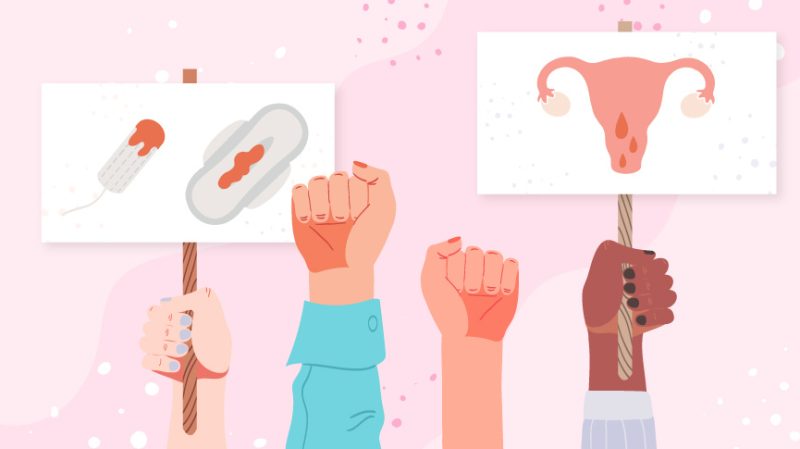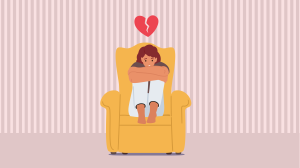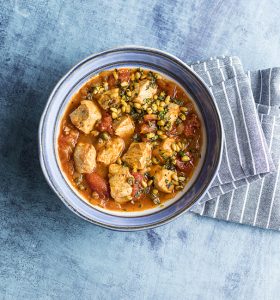What Period Poverty Looks Like in Different Countries

Things such as beliefs, religions, attitudes, access to menstrual products, taboos, poverty, and societal expectations play a huge role in how menstruation is seen and experienced.
What may be normal for you may be completely foreign for women in other parts of the world.
Today, we’re going to shine some light on the menstrual experience of women around the globe.
This is not only to become aware of how individual a period is to each woman, but also to bring awareness to things such as period poverty and unhealthy feelings of shame surrounding menstruation.
Period poverty is when a woman doesn’t have access to menstrual products, safe and hygienic places to use them, and the right to manage their period without shame or stigma.
And actually, it’s more common than you may think…
Period poverty takes place in countries all over the world. In fact, research shows that period poverty exists in both richer and poorer countries.
The saddest part of this is that, for some, period poverty can have devastating and life-changing effects.
These include health risks, a lack of education and employment, and negative repercussions on one’s well being.
Additionally, where period poverty exists, many girls and women are forced to make their own menstrual products out of things such as rags, grass, or even paper.
Period Poverty Around the World
Period Poverty in Africa
In countries such as Kenya and Uganda, girls are forced to skip school or to drop out altogether, denying them the right to education.
And sadly, a whopping 65% of girls and women in Kenya cannot afford menstrual products.
Another shocking reality in Kenya is that some girls and women are forced into sexual exploitation in exchange for menstrual products.
As for the general Sub-Saharan Africa, a study conducted by UNESCO found that 1 in 10 girls in this region missed school during their period. This in itself adds to gender unequality in education and the workplace.
Period Poverty in New Zealand
Then, in New Zealand, a 2020 study revealed that as many as 90,000 girls did not attend school during their period because they couldn’t afford essential menstrual items.
And 12% of girls from year 9 to year 13 said they had difficulty obtaining menstrual products.
Period Poverty in Nepal
In some parts of rural Nepal there is a practice called Chhaupadi—an ancient tradition where girls and women are sent to stay in huts whilst on their period because their period blood is seen as “bad luck”.
During this time, they often have no or very limited access to menstrual products and sanitary conditions.
Period Poverty in the U.K.
In the U.K. it was said that more than 137,000 girls missed school because they could not afford period products. Many parents of these girls had even resorted to stealing in order to support their daughters.
In fact, more than one fifth of U.K. parents said that they had gone without something themselves so that they could provide menstrual products for their child.
Additionally, during the pandemic in 2022, up to 73% of U.K girls and women were forced to use toilet paper because they weren’t able to buy period products.
Period Poverty in the U.S.
In the U.S. a 2019 study found that 64 percent of girls and women in Missouri were unable to afford period products within that year.
These girls and women then made use of items such as diapers or paper towels.
Additionally, nearly half of these women couldn’t afford both food and period items at the same time.
Period Poverty Awareness: A WaterAid Photo Series
As we’ve now discussed some of the harsh and life-threatening effects of period poverty, we’d like to talk about a photo series project by the charity WaterAid.
This photo and interview-style initiative was brought about to try end period poverty and bring about more awareness.
Here’s what girls and women have to say about their period experiences around the world…
Pakistan
“My mom told me to use cloth during my periods. I cannot afford to use sanitary pads,” says Saba, 18, in Pakistan’s capital, Islamabad.
Uganda
“I use [a] goatskin skirt because it’s always available. It’s our traditional sanitary pad. I don’t pay anyone to use the skin,” says Lepera Joyce, 23. “Other pads are expensive. Even if my skirt gets old, I will make another one since we have many goats. My grandmother taught me how to make and use the goatskin skirt during menstruation.”
The U.K.
“The environment is a big factor for why I use reusable sanitary pads. It’s about reducing waste,” says 27-year-old Hilary from London. “I use a combination of different reusable sanitary pads, cotton or bamboo, when I am on my period. It is important to me that they are made of natural materials because I find it most comfortable and eco-friendly. Fortunately, I am in the privileged position to think of comfort when it comes to sanitary towels.”
Zambia
Limpo, 22, from Zambia uses cow patties as a form of menstrual products. “I do not put the cow patties directly on my skin, I wrap it in a cloth and place it nicely to capture the flow without staining other clothes,” she explains. “I like this method because cow patties soak up a lot of blood before they are completely soaked. I go about doing all sorts of things without any trouble.”
Australia
“I have an IUD to help manage my endometriosis and polycystic ovary syndrome, which in turn helps manage my menstrual cycle as well,” says Steph, 27, from Melbourne.
Uganda
Munyes, a 44-year-old woman in Uganda says that it is “easy and very normal to make a hole in the ground and sit on top of it for blood to drain in it.” She explains: “I find managing my period using this method very convenient because buying sanitary pads is costly and sometimes when blood comes there is no time to run to the shop to buy sanitary pads. I can’t run, letting people see my blood; I would rather make a hole in the ground to sit on.”
With these words from women all over the world, it’s evident that period poverty is more prevalent in developing countries as opposed to developed countries.
Still, period poverty is common globally, and awareness is essential to helping girls and women experience safe and stress-free periods.







